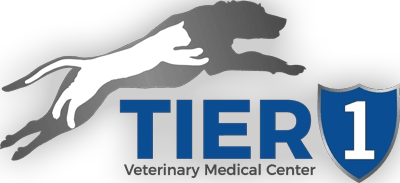Dew claws used to be a forgone conclusion; breeders removed them within the first few days after birth, and you never knew what you were missing. Dew claws that made it through the initial round of removal were commonly removed as young puppies either during or prior to the spay/neuter. The procedure was done to prevent trauma to the dew claws, as they often catch on…well, lots of things. Additionally, they can commonly develop ingrown toenails if not clipped regularly because they receive no wear from regular contact with the ground. There was a very good reason to remove them as they could cause frequent visits to the vet. They could be removed at 1-5 days of life with minimal trauma and anesthetic and heal easily. Not to mention, they don’t serve any purpose…dew they?
Some dew claws are vestigial, meaning they are only attached by skin and soft tissue — no muscle or bone. These dew claws are not functional and are usually found on back legs if a dog has any. On the other hand, most dew claws attach to muscle, ligament, and bone and can function similarly to other toes. They cannot move forward and back and retract much, but they can hook and hold, helping dogs grip. These toes come into play with rapid changes in direction and can even help with grip and climbing. This function is particularly valuable for working dogs, i.e. hunting, herding, agility, schutzhund, etc.
The 3 greatest considerations for removing dew claws include:
- Unless done within the first 5 days of life, this is an amputation, a surgery requiring anesthesia.
- What is your dog’s job?
- What is your dog’s environment?
#1 Removing dew claws is an amputation, a surgery requiring anesthesia.
This may come as a shock for the primary consideration, but in many cases, the breeder decided about your pup’s dew claws for you. If you get a puppy with dew claws and the decision is yours, it’s important to carefully weigh the benefits and alleviated risks afforded by removing the dew claws against the risk of anesthesia and the risk/pain in amputating a digit.
- Anesthesia is the riskiest thing we undertake in veterinary medicine. Even with every precaution we take, every safeguard and monitoring mechanism we have in place, no one can guarantee risk-free anesthesia. Even if your dog isn’t a working dog and will have no use for the dew claws in your estimation, is it worth a possible risk to their life?
- Removal in the first few days of life before bones have finished hardening and all the joints have finished developing is a simple, albeit slightly crude, endeavor. A simple cut and close. If this was not the case for your pup, by the time you bring them home, that digit and those joints have developed. Now we are talking about tying off blood vessels, cutting through joints, multiple layers of stitches, and bandaging. Is that something your dog needs to go through? Will they benefit?
#2 What is your dog’s job?
Working dogs (especially hunting dogs, herding dogs, schutzhund) or any other dogs with occupations where the dog is gripping and digging in for rapid acceleration and changes in direction highly benefit from dew claws for grip. Use your hands out in front of you to poise yourself to lunge to one side or another, and you will understand what I mean; you use your thumbs. Even hard-core fetchers need a little extra help. Keeping dew claws intact can give your working dog an edge and help them get a little extra grip.
- Additional food for thought here: if you want a dog for a specific job or purpose and dew claws would provide a boon, consider reaching out to your breeder in advance (if possible), and let them know your thoughts. Ask them if they remove dew claws, and if so, ask them to leave your pup off or on, depending on your perspective.
That is not to say that dogs destined for a life of leisure and warming your feet should have their dew claws removed…which is where consideration #3 comes into play.
#3 What is your dog’s environment?
If you live in an environment where your dog is likely to snag, hook, or tear their dew claws — shop environments, forested or wooded areas, use your imagination — then consider removing dew claws if they pose no benefit to your pup’s lifestyle. However, if you live in a suburban neighborhood and stick to well-developed areas with paved or well worth walking paths, then there is likely less risk to your pet’s dew claws, and they may not require removal.
This decision, like many when it comes to your pet, is one I encourage you to make after an open conversation with your veterinarian regarding your pet. Every pet and every situation is unique and deserves more than a cookie-cutter policy. So weigh the benefits on your own and talk over your feelings and concerns with us. We’re happy to share our opinions (some of us have many) and help you make the right choice for your dog and their little piggies.
Tier 1 Veterinary Medical Center in Palmer is Alaska’s only comprehensive animal hospital. We are available by appointment, in addition to accepting emergencies and walk-ins. With CT, MRI, and Ultrasound available on-site, our facility provides advanced treatment options for your pet. Contact us today to schedule an appointment.
